Lasker Scholars Are Coming for Cancer
IRP Program Supports Cutting-Edge Cancer Research
BY BRANDO LEVY, I AM INTRAMURAL BLOG
The cumulative years of experience among NIH researchers is truly astounding, with some scientists having spent half a century or more studying various forms of disease. As incredibly valuable as their hard-earned wisdom is to finding new treatments, any scientific field also benefits tremendously from a constant influx of young talent. That is where the Lasker Clinical Research Scholars Program, a partnership with the Lasker Foundation, comes in.
The Lasker program identifies promising early-career physician-scientists in a wide variety of fields and provides them with funding and resources to start their own independent lab at NIH. Purely by coincidence, the latest Lasker Scholars happen to all specialize in the study and treatment of cancer. Read on to learn more about the new ideas and bounding enthusiasm these scholars are bringing to NIH’s fight.
Rosa Nguyen, M.D., Ph.D., NCI-CCR
Investigating Immunotherapies for Cancer in Kids
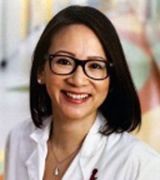
Rosa Nguyen
Age may be the most important risk factor for developing cancer, as someone over the age of 60 is more than 40 times as likely to be diagnosed with the illness as someone below the age of 20. This makes it a particularly cruel twist of fate when cancer strikes a child, reinforcing Rosa Nguyen's commitment to focus her career on combating cancers in children.
Nguyen studies a form of cancer called neuroblastoma. Her first personal experience with neuroblastoma occurred during her first year of clinical fellowship, when she treated a young boy with a commonly used immunotherapy designed to entice his immune system to attack his cancer.
“Once the infusion started, the little boy screamed at the top of his lungs due to pain, which is a common side effect of this treatment,” Nguyen recalled. “I left the room mortified. I understood that we wanted to combat his cancer by any means possible, but it came at a significant cost.”
As Nguyen learned more about neuroblastoma, she discovered that grueling immunotherapy regimens like the one she administered to that boy do not help 40% of patients. She resolved to develop more effective immunotherapies that would not cause such severe side effects.
“Countless clinical experiences since have shown me the dire need for better immunotherapies not only to treat neuroblastoma, but also other pediatric solid tumors,” she said.
Since joining NIH, Nguyen has made significant strides toward that goal, alongside diverse teams of colleagues from across the NIH. She helped develop a new immunotherapy for neuroblastoma that uses CAR T cells, which are genetically manipulated immune cells that scientists have given the ability to recognize and attack a patient’s tumor.
Now, running her own lab as a Lasker Scholar, Nguyen hopes to refine this treatment and help guide it through clinical trials at NIH so that it can one day make its way into cancer clinics around the world.
Samuel Ng, M.D., Ph.D., NCI-CCR
Searching for Lymphoma’s Weak Spots
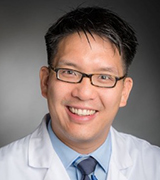
Samuel Ng
For Samuel Ng, joining the NIH as a Lasker Scholar meant his career had come full circle since a summer internship at NIH during his junior year of college. That internship was what cemented his goal to make science and medicine a permanent part of his life.
“I had this nebulous idea that I wanted to be a physician, and I did all the pre-med courses, but it wasn’t until that experience at NIH that I had a template for what being a physician-scientist could be.”
The immune cells that Ng studied at NIH that summer, called T cells, would become a common thread throughout his research career. Nowadays, Ng’s lab studies what goes wrong in T cells to cause them to become cancerous. The specific class of cancers he studies, collectively known as T-cell non-Hodgkin lymphomas, has proven more difficult to treat than non-Hodgkin lymphomas caused by problems with B cells. To help research T-cell lymphomas catch up to its B-cell cousin, Ng has been developing cell models of one type of T-cell non-Hodgkin’s lymphoma—specifically, angioimmunoblastic T-cell lymphoma (AITL), which is one of the most common subtypes of the illness.
“When I started my postdoc, there weren’t very many cell lines for T-cell lymphomas, and particularly for AITL, none existed,” he explained. “We are using these cell lines to identify genetic vulnerabilities that could be exploited therapeutically.”
“There’s been so much development on the B-cell side that I knew if I wanted to move the needle, T-cell lymphoma was a place where my work would really make a difference,” he added.
Since Ng launched his lab at NIH, he said that he hopes his team can more quickly achieve life-saving breakthroughs for patients with T-cell lymphomas. “That’s ultimately whom we’re doing all of this for, and I’m just very humbled to have the privilege to participate and try to help them this way.”
Ramya Ramaswami, M.B.B.S., NCI-CCR
Improving Treatment for HIV Patients with Cancer
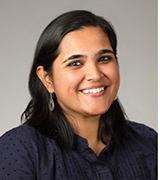
Ramya Ramaswami
When HIV attacks the immune system, it makes the body more vulnerable to not only other infectious diseases, but also to cancer. Infectious agents, like the Kaposi sarcoma-associated herpesvirus (KSHV), can even cause cancer themselves.
Ramya Ramaswami has spent the past four years studying not only the cancer caused by KSHV, known as Kaposi sarcoma, but also other ailments that sometimes come along with it.
“KSHV can lead to a panoply of conditions that can emerge at the same time as Kaposi sarcoma, making people very unwell,” Ramaswami explained. “Kaposi sarcoma is very distinct on the skin and many other conditions caused by KSHV are often missed. This can be a problem because the treatments may be different depending on the nature of KSHV-associated disorders.”
Ramaswami hopes to provide physicians with better diagnostic tools “so that patients can receive timely and targeted treatment to improve their outcomes.” And now that she has been selected as a Lasker Scholar, she plans to expand her research to exploring other virus-associated cancers, in addition to Kaposi sarcoma, that disproportionately affect people living with HIV.
“This population is often excluded from cancer clinical trials and is often unable to benefit from cancer care advancements,” she noted. “I wanted to help drive change for this population.”
That work requires Ramaswami to collaborate with experts in a range of fields, including fellow cancer physicians, virologists, and immunologists.
“As someone working on clinical trials for patients with cancer and HIV, my work is naturally collaborative,” she said. “I love the interactions and the learning between scientists and clinicians from different disciplines.”
Nitin Roper, M.D., NCI-CCR
Looking Into Lung Cancer’s Response to Immunotherapy
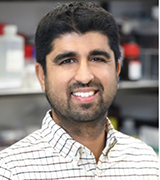
Nitin Roper
As an avid skier and tennis player who commutes to and from work on his bike, Nitin Roper knows well the tremendous power of the lungs. Once he catches his breath each morning, he picks up where he left off in his mission to improve treatment for lung cancer.
Roper is focused specifically on small cell lung cancer, a type of tumor thought to arise from cells in the lungs known as neuroendocrine cells, which secrete hormones into the blood in response to signals from the body’s nervous system.
Roper arrived at NIH in 2015 as a medical oncology fellow with “little background in the lab, having spent the last many years in clinical training,” he recalled. “I expected to do clinical research, but I soon realized that the most significant discoveries that could be made in cancer occur in the lab, and NIH has outstanding laboratories and translational research opportunities.”
Now with eight years in the lab under his belt, Roper is using the resources provided by the IRP and the Lasker Scholars Program to change the way doctors treat neuroendocrine lung cancers as well as neuroendocrine tumors that form in other parts of the body. His lab’s first step in that endeavor is identifying the molecular factors that predict how small cell lung cancer responds to immunotherapy. By doing so, his research may one day help make immunotherapies more effective and increase the ability to match patients to the right treatments.
“When immunotherapy became a major new treatment option for lung cancer, it was clear to me that this would be a critical area to work on,” Roper said. “If any of these new treatment approaches developed in my lab improve patient lives, I would be satisfied that I picked the right career path.”
Payal Khincha, M.B.B.S., NCI-DCEG
Protecting Families with Elevated Cancer Risk
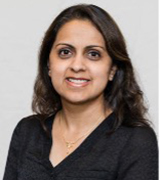
Payal Khincha
Sometimes, careers are passed down through families just like genes. This was certainly the case for Payal Khincha, who was inspired to become a doctor by her father, who works as a surgeon in India.
It was only later in life, though, that Khincha fell in love with research. In 2012, she met Sharon Savage, an NCI senior investigator, who at the time was studying families with a much different inheritance than the one Khincha received from her father. Due to certain inheritable gene mutations, some people tend to develop cancer at higher rates than the general population, and at much earlier ages. Savage specializes in studying those families, and Khincha joined her research group.
Khincha would eventually take over as the lead researcher on one long-term study of Li-Fraumeni Syndrome (LFS), a condition caused by mutations in the TP53 gene that dramatically increases the risk of developing multiple types of cancer. The cellular systems that suppress cancer in individuals with LFS are so thoroughly disrupted that it is not uncommon for people with the condition to get their first cancer diagnosis before age 35.
By examining the biological reasons why people with LFS are so vulnerable to cancer and developing improved methods of monitoring them for tumors, Khincha hopes she can help stop cancer from affecting their lives so significantly.
“The impact of the research we do and the answers that we find are so important to the families who are affected by these disorders,” Khincha said. “LFS is among the most severe cancer predisposition syndromes with extremely high lifetime cancer risks starting from infancy. The need for science is so high, and every discovery is critical to their outcomes.”
Now as a Lasker Scholar, Khincha will continue to learn more about LFS as well as the life lessons she learns from her patients and their families.
“I have learned about resilience, acceptance, grief, and the importance of a big-picture perspective on life,” Khincha said. “I truly believe they have helped make me a better person, physician, and scientist.”
This article is adapted from an Oct. 30, 2023, post written by Levy for the “I Am Intramural Blog."
To read longer profiles on each Lasker Scholar visit the “I Am Intramural Blog” or visit the Lasker Foundation website.
All photos courtesy of the “I Am Intramural Blog.”
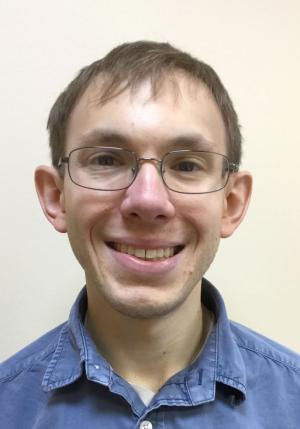
Brandon Levy is a health communications specialist for the NIH Intramural Research Program and particularly enjoys writing about the cutting-edge research performed at NIH, but he also produces videos, podcasts, and content for social media. Before joining the IRP, he worked as a science writer at NINDS and as a postbaccalaureate IRTA fellow at NIMH. When he’s not hunched over a computer keyboard, Brandon enjoys singing in his acapella group, reading, honing his skills as an amateur chef, and over-obsessing about college basketball.
This page was last updated on Monday, December 2, 2024
